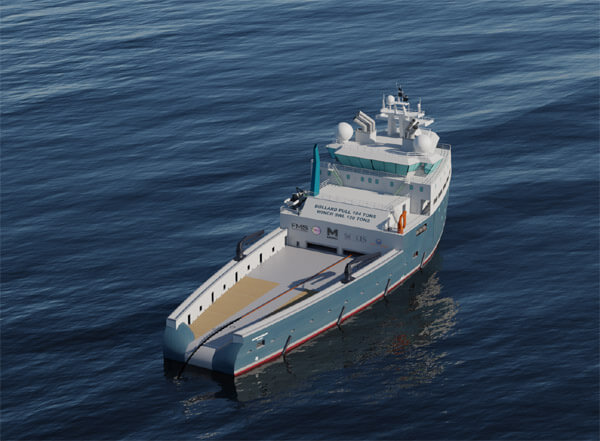Revolutionizing Offshore Wind Installation: The Future FLOW Installation Vessel
A consortium based in the UK is pioneering the development of a groundbreaking vessel tailored to support the emerging segment of floating offshore wind installations. As the offshore wind energy industry transitions towards floating turbines, there arises a crucial need for specialized vessels capable of efficiently positioning and anchoring these structures.
According to Ian Godfrey from Tope Ocean, an engineering firm involved in the project, “The current global fleet is inadequate for the serialized installation of floating turbines and their accompanying infrastructure.”
The vessel concept is designed to address a critical aspect of the floating wind installation process that has yet to be optimized. It will accommodate various anchor types, including drag embedment anchors, suction piles, and driven piles, essential for securing floating wind turbines in diverse offshore environments.
Key Features of the Future FLOW Installation Vessel
The vessel’s design, now in the feasibility stage, is tailored to meet the evolving demands of the offshore wind industry. It will specialize in installing mooring lines onto anchors swiftly, facilitating the seamless connection of floating foundations at offshore sites. The vessel boasts a range of innovative features, including:
- Utilization of low-carbon fuels for enhanced fuel efficiency
- Hydrodynamically optimized hull for improved performance
- Expanded mooring capacity to accommodate various anchor types

Efficiency and Sustainability at the Core
Simon Hindley from Solis Marine Engineering emphasizes, “We’ve reimagined the mooring installation process with a vessel tailored to meet these new requirements.” By integrating an energy-efficient hull design with a low-emission powertrain, the vessel aims to enhance construction efficiency while minimizing environmental impact. The use of alternative fuels like methanol further underscores the vessel’s commitment to sustainability.
The vessel’s propulsion system, equipped with azimuth thrusters, ensures optimal station-keeping and dynamic positioning efficiency. Additionally, large below-deck cable tanks and chain lockers are incorporated to accommodate the extensive mooring ropes and chains required for floating wind installations.
Advancing Clean Maritime Technology
The Future FLOW Installation Vessel project is part of the Clean Maritime Demonstration Competition Round 4 (CMDC4), supported by the UK Department for Transport and Innovate UK. Consortium partners include Solis Marine Engineering, Tope Ocean, First Marine Solutions, and Celtic Sea Power.
The consortium is progressing towards the next design phase, focusing on optimizing equipment for handling synthetic ropes, conducting weather-limit analyses, and addressing regulatory challenges associated with methanol propulsion systems. The ultimate goal is to obtain Approval in Principle from a leading ship classification society by December 2025.

